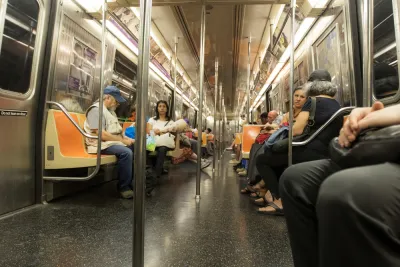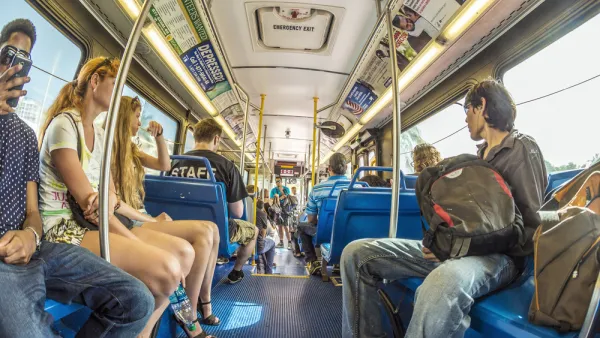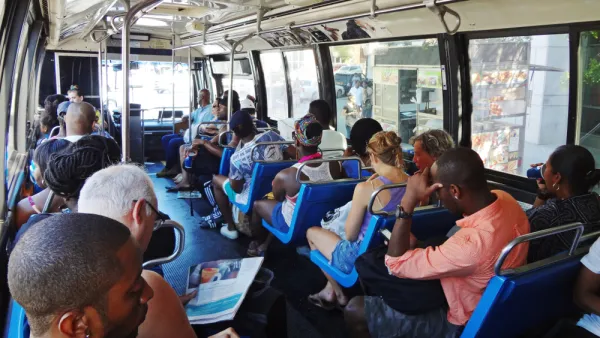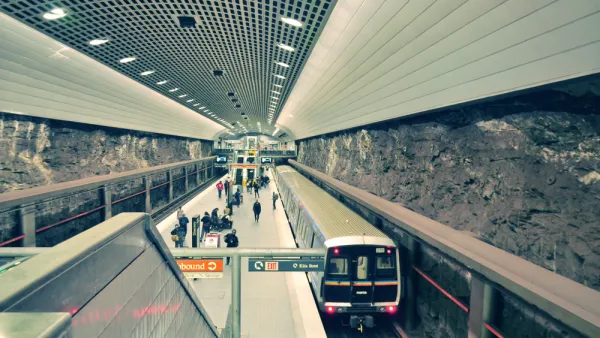A survey of public transit users indicates riders want to see more tech features that improve their experience, such as trip planning and improved payment platforms.

According to an article by Skip Descant, "[p]ublic transit riders in post-lockdown America want their buses and trains to arrive on time, with shorter wait times, and they want to be kept up to speed on crowding and cleanliness." While these might seem like basic expectations, the pandemic highlighted the gaps in transit service and, at the same time, accelerated the implementation of certain service improvements that riders will expect to continue in the post-COVID era.
A recent survey of 1,200 transit riders showed that most people "want apps or tech features to improve the transit experience. These can come in the form of real-time vehicle-crowding data, or technology that integrates trip planning across multiple modes and payment." The survey also showed that 40 percent of transit riders use two forms of transportation during their commute, while 20 percent use three forms of mobility, "making the case for better multimodal integration across transportation systems." Respondents also indicated a desire to see continued protocols to limit crowding.
"COVID-19 has shown itself to be a time of innovation across government sectors — some of it forced, while in other cases hastening trends already in place — and presents opportunities for better systems than before the pandemic, say observers." To help transit recover, transit agencies can use rider feedback on pandemic measures to inform their decisions about how to improve future service and provide "compelling options" that make it easier for commuters to ditch their cars.
FULL STORY: Transit Riders Expect Tech Improvements Post-COVID

National Parks Layoffs Will Cause Communities to Lose Billions
Thousands of essential park workers were laid off this week, just before the busy spring break season.

Retro-silient?: America’s First “Eco-burb,” The Woodlands Turns 50
A master-planned community north of Houston offers lessons on green infrastructure and resilient design, but falls short of its founder’s lofty affordability and walkability goals.

Delivering for America Plan Will Downgrade Mail Service in at Least 49.5 Percent of Zip Codes
Republican and Democrat lawmakers criticize the plan for its disproportionate negative impact on rural communities.

Test News Post 1
This is a summary

Test News Headline 46
Test for the image on the front page.

Balancing Bombs and Butterflies: How the National Guard Protects a Rare Species
The National Guard at Fort Indiantown Gap uses GIS technology and land management strategies to balance military training with conservation efforts, ensuring the survival of the rare eastern regal fritillary butterfly.
Urban Design for Planners 1: Software Tools
This six-course series explores essential urban design concepts using open source software and equips planners with the tools they need to participate fully in the urban design process.
Planning for Universal Design
Learn the tools for implementing Universal Design in planning regulations.
EMC Planning Group, Inc.
Planetizen
Planetizen
Mpact (formerly Rail~Volution)
Great Falls Development Authority, Inc.
HUDs Office of Policy Development and Research
NYU Wagner Graduate School of Public Service





























